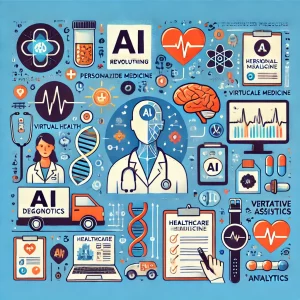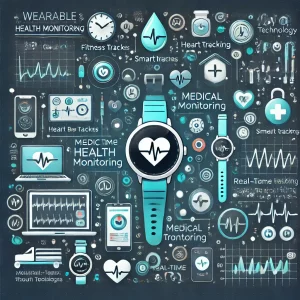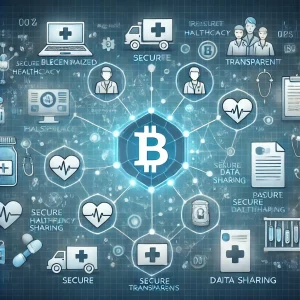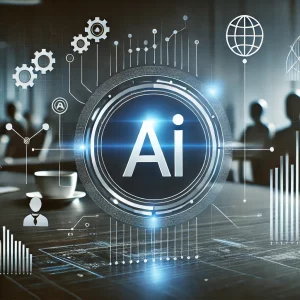The Role of AI in Detecting Cyber Threats in Healthcare Systems
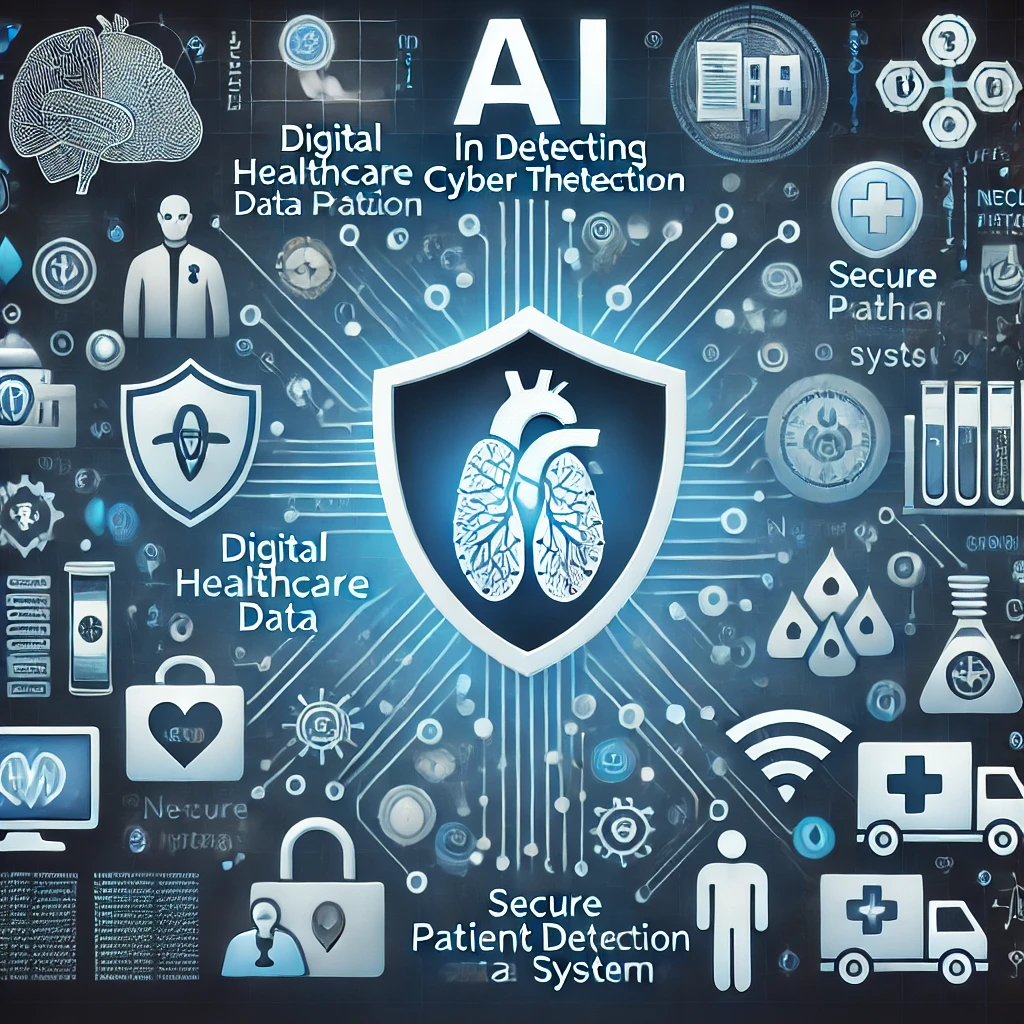
The healthcare industry has become an increasingly attractive target for cybercriminals, with sensitive patient data and critical medical infrastructure at risk. As healthcare systems continue to digitize, with more reliance on electronic health records (EHRs), telemedicine, and connected devices, the sector faces growing challenges in maintaining cybersecurity. To address these challenges, artificial intelligence (AI) is emerging as a vital tool in detecting and mitigating cyber threats in healthcare systems.
In this article, we will explore how AI is revolutionizing cybersecurity in healthcare, its key applications in threat detection, and the benefits and challenges of implementing AI-driven solutions in healthcare cybersecurity.
The Growing Threat of Cyber Attacks in Healthcare
Healthcare organizations are highly vulnerable to cyberattacks due to the value of the data they handle. Patient information, including medical histories, social security numbers, and billing data, is a prime target for cybercriminals who can exploit this information for financial gain. Additionally, healthcare systems often house outdated software, making them more susceptible to ransomware attacks, data breaches, and other forms of cyberattacks.
Key cyber threats faced by healthcare systems include:
- Ransomware attacks: Cybercriminals encrypt critical healthcare data and demand a ransom to release it. These attacks can disrupt hospital operations, delay treatments, and risk patient safety.
- Data breaches: Hackers infiltrate healthcare systems to steal sensitive patient data, which is then sold on the dark web or used for identity theft and insurance fraud.
- Phishing attacks: Cybercriminals trick healthcare employees into divulging sensitive information or clicking on malicious links, granting hackers access to the healthcare network.
- Distributed denial-of-service (DDoS) attacks: These attacks flood healthcare systems with traffic, overwhelming the servers and rendering the systems inoperable.
In response to these growing threats, AI has emerged as a powerful tool in enhancing the cybersecurity defenses of healthcare systems.
How AI is Used to Detect Cyber Threats in Healthcare
AI is well-suited to detecting and mitigating cyber threats due to its ability to process vast amounts of data and recognize patterns in real time. AI-driven cybersecurity tools can identify suspicious behavior, detect anomalies, and respond to potential threats much faster than traditional methods. Here are the key ways AI is used to detect cyber threats in healthcare systems:
1. Anomaly Detection
One of the most effective ways AI detects cyber threats is through anomaly detection. AI systems can monitor network activity and establish a baseline of what constitutes normal behavior within a healthcare system. When the AI detects deviations from this baseline, it flags these anomalies as potential threats.
For example, if an AI system identifies an unusual number of login attempts from an unfamiliar IP address or detects abnormal data access patterns, it can alert the cybersecurity team to investigate further. This early warning system helps detect breaches or intrusions before they cause significant damage.
2. Behavioral Analysis
AI excels at analyzing user behavior to identify potential insider threats or compromised accounts. In healthcare systems, AI can monitor how healthcare professionals interact with sensitive patient data, including access times, types of data accessed, and patterns of behavior.
If the AI detects unusual behavior, such as an employee accessing patient records outside of normal working hours or accessing more data than necessary for their role, it can trigger an alert. This proactive approach can help healthcare organizations identify insider threats or compromised credentials before any harm is done.
3. Threat Intelligence and Predictive Analysis
AI systems are capable of processing vast amounts of data, including threat intelligence from external sources, such as known malware signatures, phishing campaigns, and threat actor tactics. By analyzing this data, AI can predict future cyberattacks and identify emerging threats.
Predictive analysis helps healthcare organizations stay ahead of cybercriminals by anticipating their next move. For example, AI-driven cybersecurity platforms can identify patterns in previous attacks and predict the likelihood of similar attacks happening again, allowing healthcare IT teams to strengthen their defenses proactively.
4. Real-Time Network Monitoring
AI-based cybersecurity tools continuously monitor healthcare networks for suspicious activity in real time. These tools analyze network traffic, flagging potential cyberattacks such as unauthorized access attempts, malware infiltration, or DDoS attacks.
Real-time monitoring is particularly valuable in healthcare environments where downtime or delays can have serious consequences for patient care. By identifying threats as they happen, AI can respond immediately to neutralize the attack or isolate affected systems, minimizing the impact on healthcare operations.
5. Automated Incident Response
In addition to detecting cyber threats, AI can also be used to automate incident response processes. Once a threat is identified, AI-powered systems can take immediate action to contain the threat, block malicious IP addresses, or isolate infected devices.
Automating incident response can reduce the time it takes to address a cyberattack, preventing the spread of malware or further data breaches. For example, AI systems can automatically block phishing emails from reaching employees’ inboxes or quarantine devices infected with ransomware to prevent the malware from spreading to other parts of the network.
Benefits of AI in Detecting Cyber Threats in Healthcare
The use of AI in detecting cyber threats offers numerous advantages for healthcare organizations, including:
1. Speed and Efficiency
AI systems can analyze vast amounts of data in real-time, making them highly efficient at detecting and responding to cyber threats. Unlike traditional methods, which often rely on human intervention, AI can identify anomalies and threats within seconds, reducing the time it takes to contain attacks and mitigate damage.
2. Improved Accuracy
AI algorithms continuously learn and adapt to new threats, allowing them to improve their accuracy over time. AI can detect complex attack patterns and behaviors that may be missed by traditional cybersecurity tools, reducing the risk of false positives and false negatives.
3. Proactive Defense
One of AI’s key strengths is its ability to predict and prevent future attacks by analyzing historical data and current trends. AI can anticipate potential threats and help healthcare organizations take proactive measures to strengthen their defenses before an attack occurs.
4. Cost Savings
While AI-driven cybersecurity tools may require significant upfront investment, they can ultimately save healthcare organizations money by reducing the frequency and severity of cyberattacks. By preventing data breaches and ransomware attacks, AI can minimize the financial impact of cybercrime, which includes regulatory fines, legal fees, and reputational damage.
5. Reduced Human Error
Human error remains one of the leading causes of cybersecurity breaches in healthcare. AI helps reduce the reliance on manual processes, automating threat detection and response, and minimizing the risk of human oversight or mistakes in identifying cyber threats.
Challenges of Implementing AI in Healthcare Cybersecurity
While AI offers numerous benefits for detecting cyber threats in healthcare, there are also challenges associated with its implementation:
1. Data Privacy and Security
AI systems rely on access to large datasets to function effectively. In healthcare, this includes sensitive patient data, which raises concerns about data privacy and security. Healthcare organizations must ensure that AI systems comply with data protection regulations, such as HIPAA, and that the AI itself is secure from potential breaches.
2. Integration with Existing Systems
Integrating AI-driven cybersecurity tools with existing healthcare systems can be complex, particularly in organizations that rely on legacy infrastructure. Ensuring that AI solutions work seamlessly with electronic health record (EHR) systems, medical devices, and other critical systems requires careful planning and investment in technology upgrades.
3. False Positives
While AI can significantly improve threat detection, there is a risk of generating false positives—alerts triggered by legitimate behavior rather than malicious activity. Too many false positives can overwhelm cybersecurity teams, leading to alert fatigue and potentially causing real threats to go unnoticed.
4. AI Bias
AI systems are only as good as the data they are trained on. If AI algorithms are trained on biased or incomplete data, they may not perform as expected, leading to inaccurate threat detection. Ensuring that AI systems are trained on diverse and representative datasets is critical to minimizing bias and improving accuracy.
5. Cost and Expertise
Implementing AI-driven cybersecurity tools can be costly, particularly for smaller healthcare organizations with limited budgets. Additionally, AI systems require ongoing maintenance and oversight by cybersecurity professionals with expertise in AI and machine learning. This can be a barrier to adoption for organizations lacking the necessary resources or skills.
The Future of AI in Healthcare Cybersecurity
As AI technology continues to evolve, its role in healthcare cybersecurity is expected to expand. Future developments may include more advanced predictive analytics, improved integration with medical devices, and enhanced collaboration between AI systems and human cybersecurity professionals. Here are some trends we can expect:
- AI-Driven Medical Device Security: As more medical devices become connected to the internet, AI will play a critical role in securing these devices from cyberattacks, protecting patient data and ensuring device functionality.
- Advanced Threat Intelligence: AI will continue to improve its ability to analyze global threat intelligence data, helping healthcare organizations stay ahead of emerging cyber threats.
- Collaboration with Human Experts: AI systems will work alongside human cybersecurity experts, providing real-time insights and automating routine tasks, allowing professionals to focus on more complex issues.
Conclusion
AI is transforming the way healthcare organizations detect and respond to cyber threats, offering faster, more accurate, and proactive defense mechanisms. With the healthcare industry facing increasing cyber risks, AI-driven solutions are critical to safeguarding sensitive patient data, protecting medical devices, and ensuring the continuity of care. While challenges such as data privacy, integration, and cost remain, the benefits of AI in healthcare cybersecurity are undeniable.
As AI continues to advance, it will play an increasingly vital role in defending healthcare systems from the ever-evolving threat landscape, ensuring that patient data and healthcare infrastructure remain secure.
